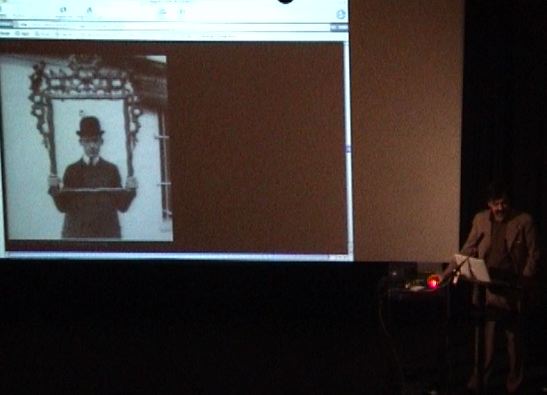
4DSaace conference, Ica London May 19, 2003
Antonino Saggio,
La Sapienza Roma
AS Home:
http://www.citicord.uniroma1.it/saggio // or just Google:
First Name, Last name

DownLoad Quick Time movies of the SPEECHApproxim 3mega each.
PArt 1
Crisis
PArt 2
Models
PArt 3
Conceptions
PArt 4
Interactivity
4dspace: the developing identity of
Interactive Architecture
and its influence on the contemporary cultural environment

London. Curatrice Lucy Bullivant.
Institute of Contemporary Arts - London
Mon 19 May, 2003
(Resoconto Intera conferenza onedotzero Arch'it in italiano)
Let's Start from the first word
:, Crisis
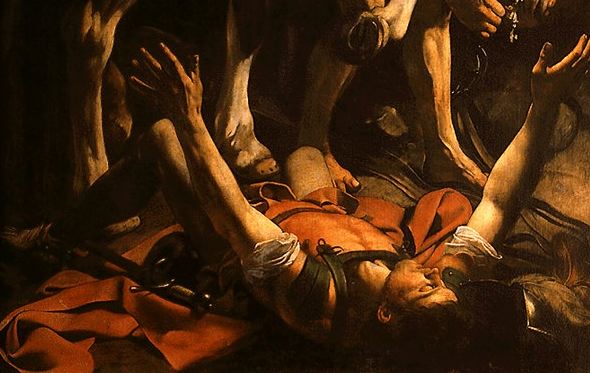
Saint'Paul Caravaggio
Palestinians
Here comes the theme of Modernity. Modernity, from my point of view, (in Baudrillard and Zevi terms), is the striving toward the transformation of world crises into aesthetic and ethical values at a tempo that architecture could cultivate and manifest.
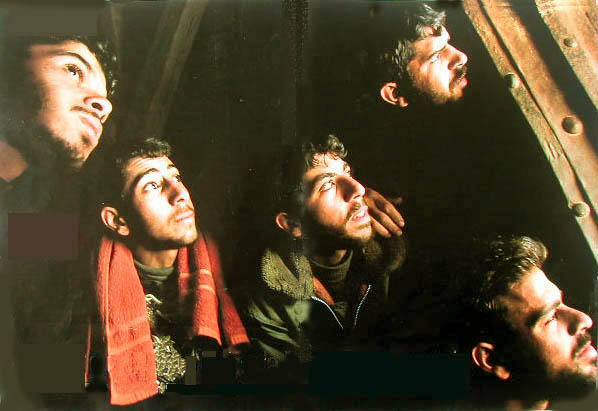
CAROLYN COLE, AUTHOR
During the siege of the Basilica of Nativity in Betlemme, a few Palestianns
look appear at the Door of Humility
Crisis is the essence of change is the essence of Modernity.
When we perceived that everything is changed we can step back in the
old order of values or we can face new challenges, we can start a new search.
This Implies that we as archietcs or more generally as intellectuals
are facing with
SUBSTANCES
The word "substance" comes from Edoardo Persico. In the conclusion of his "Profezia dell'architettura" he said: "For a century, the history of art in Europe has not merely been a series of particular actions and reactions but a movement of collective consciousness. Recognizing this means discovering the contribution of current architecture. And it does not matter if this premise is denied by those who should most defend it, or betrayed by those who, in vain, most fear it. It still stirs up the secret faith of the era all the same. 'The substance of things hoped for'"
There was, in that "substance of things hoped for", the striving toward modernity, toward the transformation of world crises into esthetic and ethical values at a tempo that architecture could cultivate and manifest.
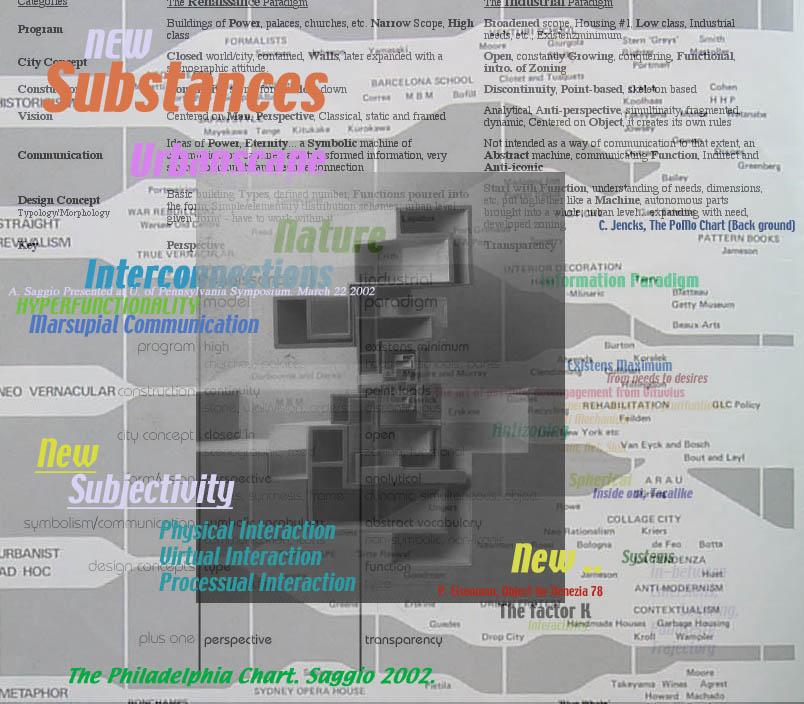
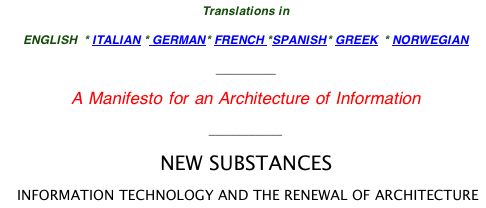
This article treats this in major depths GO



B'' HYPER FUNCTIONALITY
One of the Key difference in the conception of space
: System Space - Organ Space
"But there is also a component of method in system space. Today’s architecture is not the result of “structures” (spatial, constructive, functional or formal) that reinforce each other cohesively, but the result of the co-presence of systems with a high level of reciprocal independence."AS "Architecture Informs" in , The Chartres of Zurich, Birkhauser Basel 2003
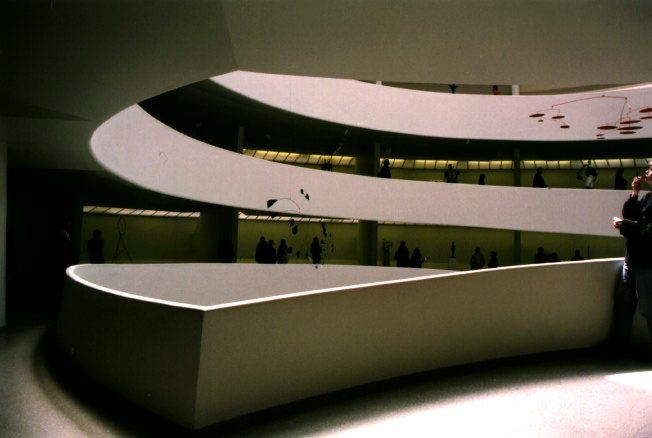
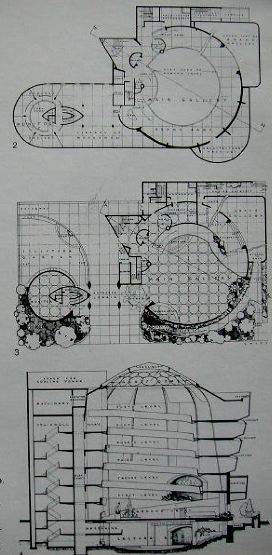

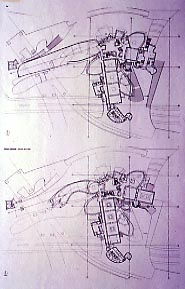
Information is structured through electronics into models that have a continually modifiable and re-shapable form. These are real information trees with parts that can also be hierarchically connected. This means that by modifying a lower part of the tree, the repercussions are ramified to the entire upper structure. Architecture is called upon to look deeply even “inside” this IT model in order to understand it, to utilize its most profound rules and peculiar characteristics, to write with its own means a chapter in the transformation of these past few decades.
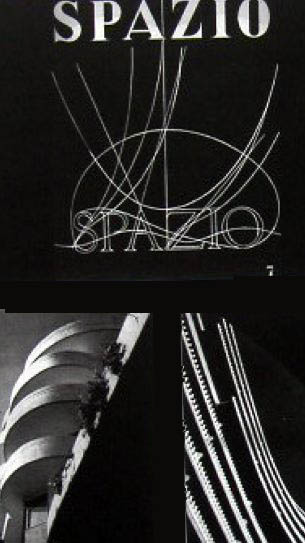 ..
..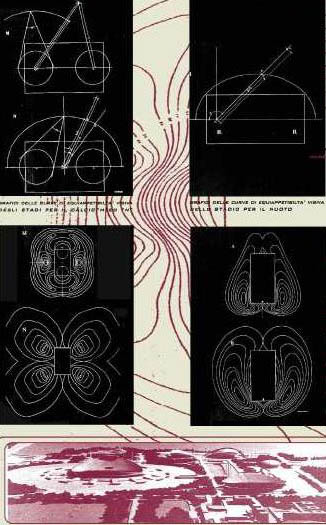 ..
..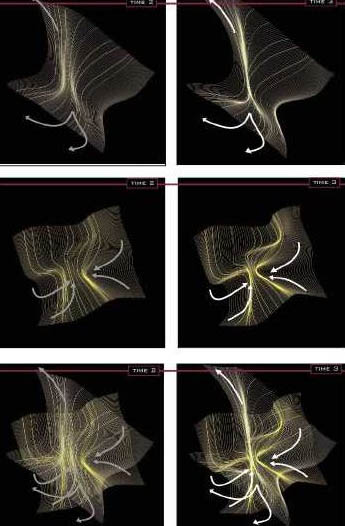
Luigi Moretti In Mariella Tesse Graduation Thesis Saggio Advisor" La
Sapienza go
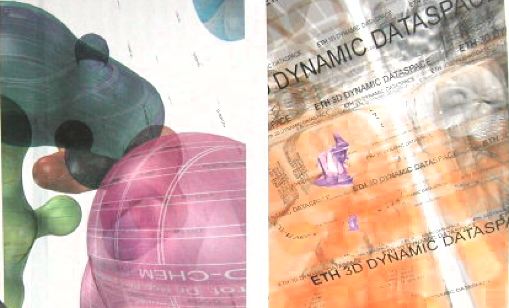
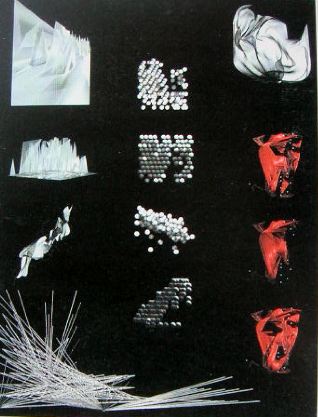
J. Frazer frazer evolving Virtual Environment / Thomas Leeser
Eth Word Competition Entry
..
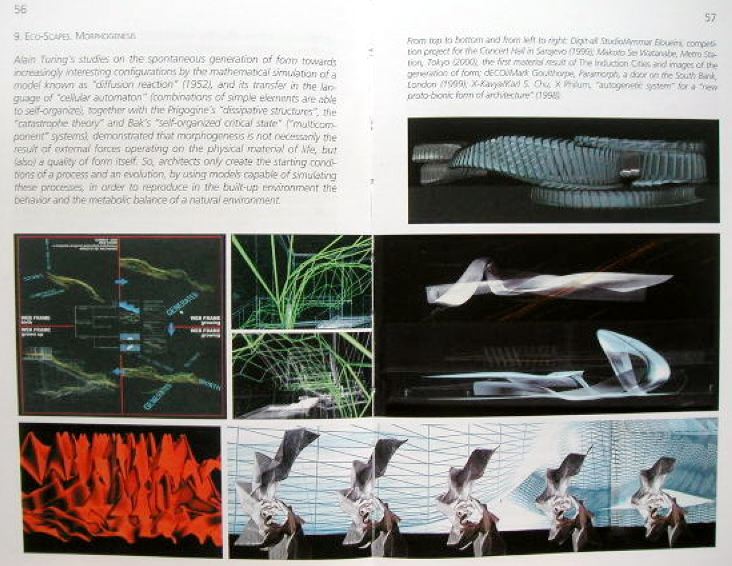
Morphogenesis Model, from Gregory's NewScapes in IT Architecture
Serries. Illustrated works of
eloueini sarajevo, Makoto Sei Watanabe Metro station, DeCoi Mark
Goulthorpe, X-Kata Karl Chi AUtogenetic system"
The challenge facing us is not only one of creating an architecture that is narrative and metaphorical, as is part of all today’s architecture, but how to create an architecture that can incorporate this complex, interrelated, changing and extremely dynamic level that characterizes the fulcrum of the IT paradigm. The real problem, as always, is not of a technical nature, (easy and almost banal), but rather an esthetic nature. How do we work with an architecture that has the “awareness” of being part of information technology? What is the esthetic sense of the IT Revolution?
Forms/Process
 ..
..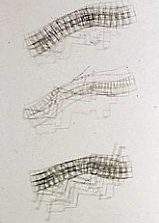
:, Conceptions
We are accustomed to representing architecture already built. To designing (or measuring) the pyramids or a Renaissance palace to put back on paper something we know as a real object already existing in space. But have we ever asked ourselves the reverse? In other words, how and how much a real object might 'resemble' the method that its contemporaries had of representing it? Perhaps this question would reveal the fact that it is knowledge itself that is 'represented' in the architectural object. The basic rules of trigonometry are illustrated in the pyramids; a calculation based on geometry (and not the tiring Roman numerals I, II, III, IV) is at the basis of the Pantheon; the loss of geometrical-arithmetical ability is evident in the cavernous and unsteady interior of a Romanesque church; without the lines and rules of perspective there would be no 'ordered' Renaissance palace, and without the circles of a compass, the curves of San Carlino or Sant'Ivo would never have taken shape. Finally, if we 'also' consider the tool, we get a clue to understanding how certain senses of space were born.From AS Preface Flyng Carpets, in Bruce Lindsey Digital Gehry,Birkhauser 2001
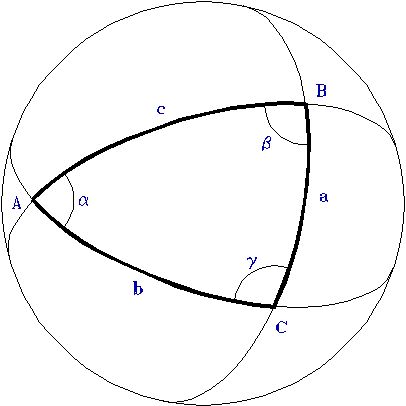 .
.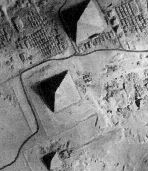
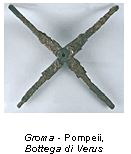
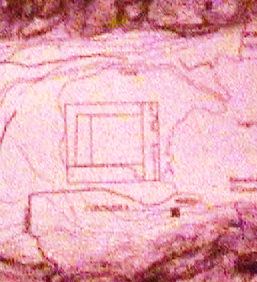 I, II, III, IV ????
I, II, III, IV ????

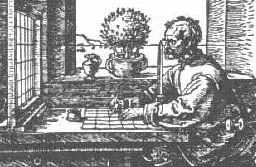
.
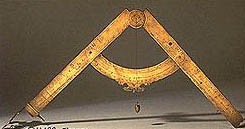 .
.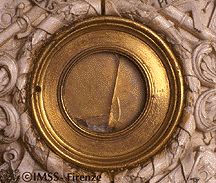 .
.
Compasso di proporzione from 1597 Galileo, Lens SPyKscope telescope
A for every thing An
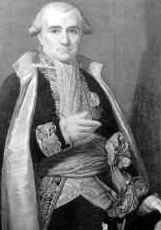

Gaspard Monge (1746-1818) The parallel Projection Abstract Objective
ANalitical
OBJECT TAKES CONTROL
Mechanical Movement

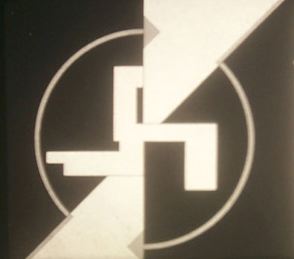

Parallel Projectons / Abstract System Of correspondance of Parts
CENTER

WG in Spain 1907 In Kari Jormakka's Flyng
Gropius vanquished the five-headed dragon of traditionalist
architecture by adopting 1. free bodies adhering to each function instead
of a priori schemes for individual typologies; 2. a centripetal system
of conquering space rather than closed blocks on the road; 3. construction
based on structural skeletons rather than continuous walls; 4. a dynamic
language instead of a figurative one anchored to history and renaissance
perspective and 5. the elimination of every form of symbolism. but Key
was
the Katlysts factor
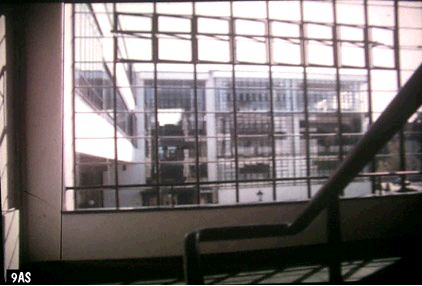 ..
..
We have to wait until the Bauhaus movement before it was understood how glass and transparency could act as the catalysts for a new vision of architecture.
In Dessau transparency becomes the issue of Gropius message. An aesthetic, formative, practical, functional and philosophical issue. This underlines Gropius’s view that transparency is the objectivisation of function, namely architecture’s capacity to annul "every communicative aspect", presenting itself alone. “Neue Sachlichkeit” would not have aesthetics, but only ethics, if it were not for transparency.
Read In English all Paper
AS, New
Subjectivity:architecture between Communication and Information
Digital | Real Dam Frankfurt

:, INSIDE It

Ledoux Jobs 1976ca
Now let us try to question our ideas of architecture 'together'
with the tool we have with us. And let us ask ourselves, 'What if our architecture
were to resemble even more the potential of our computerized models?' We
would like the flexibility, intelligence, speed of our digital model to
be the special quality of constructed architecture. A property not just
of our computer screens but of our architecture, constructed exactly just
as the measured, ordered and centered concept of perspective led to an
architecture 'in its own likeness and image'.
Each new space on arriving has required new principles and new alphabets that have been created through difficult, exhausting, rough but exciting processes. Regarding the new information space, we can only begin to catch a glimpse of a few characteristics.
SOME ELEMENTS
An important missive has arrived to me, launched into the atmosphere by the spirals of Umberto Boccioni’s “Bottiglia nello Spazio”. I filtered it through Yves Klein’s topological bottle and transcribed it for you here:
a “legendary” synthesis, an architecture “experimenting with the thousand ways of modifying life” and above all an architecture that changes “completely or in part depending on the desires of its inhabitants”.Formula for a New Urbanism
Architecture is the simplest means of articulating time and space, of modeling reality, of making us dream. This not only involves articulation and plastic modeling, the expression of a passing beauty, but influential modeling that is inscribed in the eternal curve of human desire and progress in the realization of these desires.The architecture of tomorrow will therefore be a means of modifying present conceptions of time and space. It will be a means of knowledge and a means of action.[…]
The architectural complex will be modifiable. Its aspect will change completely or in part depending on the desires of its inhabitants.
Based on this mobile civilization, architecture will be - at least in its beginnings - a means of experimenting with the thousand ways of modifying life, in view of a synthesis that can be nothing less than legendary. […]
Gilles Ivain 1953
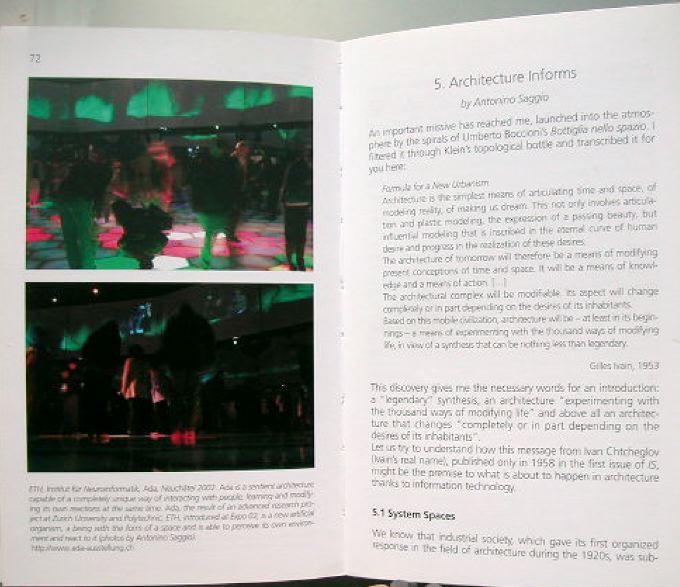
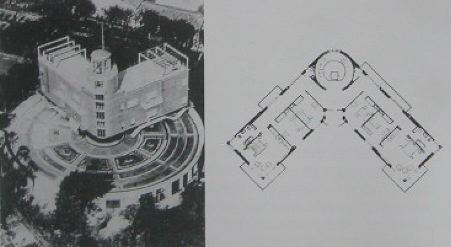
Angelo Invernizzi, CAsa Del Girasole, Marcellise Verona 1935ca In Jarmakka's
Flyngcit

Hertzberger Water Villas
Then Naturally ITO And Nouvel
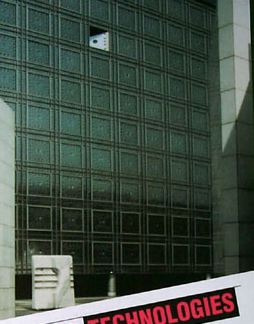 ..
..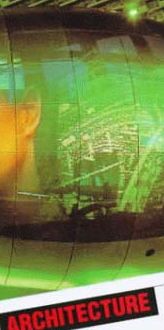 ..
..
Nouvel, Ito, never exhausted Sperimentators

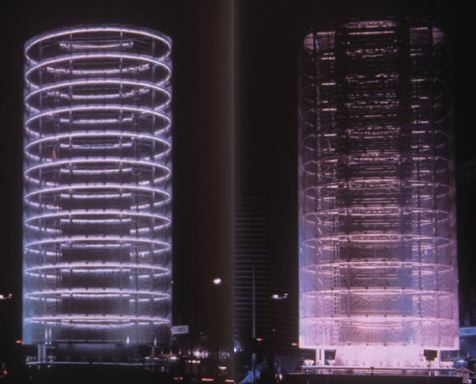
Ito Sundai Ito Tower of winds
Like dolphins that take in oxygen to jump from the sea and follow ships and see the outlines of islands and coasts, a few pioneers are working in an attempt to define the possibilities and principles of precisely this new space.Spaces that do not exist and we must formalize new syntax, new rules, new alphabets
Today, the need for creating a new alphabet is pressing. We have to create a space that still does not yet completely exist but one we begin to intuit and that can begin to shape.
Fish know only the fluid that, just like air, surrounds them. They know nothing either of what the sea or lake or river really is and know even less about the space in which we humans live.
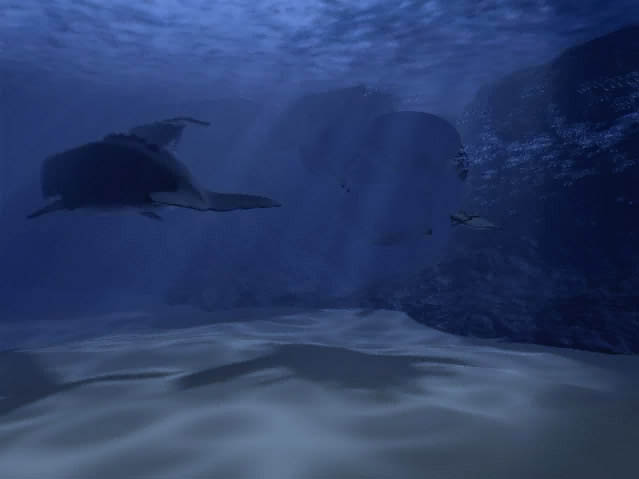
Benoit Sokal "The Amerzone" Casterman ed.
Only a jump beyond that aquatic surface can open up the sensation of another space that definitely exists, even if it is neither frequented nor understood.
..
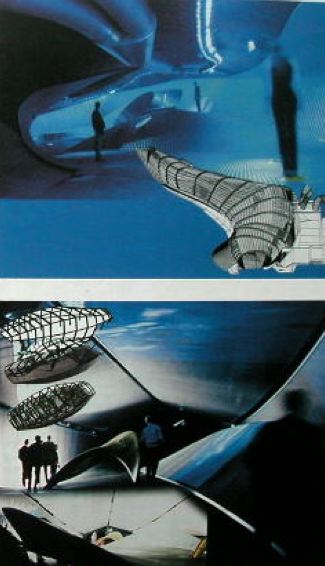
Benoit Sokal "The Amerzone" Casterman ed., Nox Spuybroel Frsh and Kas
oosterhuis Salt water pavillons, 1997
INTERACTIVITY
Physical, Emotional, Narrative, Processual, Illusionistic ect
We can even transform architecture intelligently in response to changes in climate or environmental situations and can also make architecture change with changes in scenarios of use. Not only can a series of mechanisms connected directly to electronics (such as lights, appliances, music and control systems) be interactively modified but even materials themselves can change with microfibers in coverings and glass, and new types of marble that can actually change in grain, porosity, the ability to absorb sound, and color.
In other words, architecture can not only react but also inter-react and thus adapt itself to changes in user desires through scenarios experienced as if they were a hypertext.
At the basis of hypertext systems, and later HTML and
still later the Internet, there is the idea of giving users the possibility
of being “creators of metaphors”; not giving them merely a prepackaged
metaphor but the possibility of creating by themselves their own metaphors;
not the image of a museum ship, a broken zigzagging wall, or a contemporary
cathedral but the idea that one’s own story can also be created through
architecture.
Architecture itself has always been a Moebius strip. It conforms itself around the scientific paradigms of its own era and with its movements gives form to those paradigms and renders them visible and concrete.
When Walter Gropius discovered in an exciting process
that the new mechanical and industrial, objective, functional and hygienic
world could have an absolute detonator in the transparency that multiplied,
fragmented and abstracted planes and above all revealed their functions
“in themselves” to the world, he found at the same time a vision, a technique,
a materialization of the new “a-perspective” sensibility and established
the esthetic of the new objectivity.
"
"
IT REVOLUTION IN Architecture book series has been from
the very beginning within this
framework and I put at the center of the whole
series the issue of Interactivity.

The book series was planned in November 1996, first
book and Post
face "HyperArchitecture" was out in March 1998.
Now that we have Ada, we have The Cloud Blur, we have
the
Klang turm and we have all of you here it seems
to me that what
we worked for is here as a real possibility.
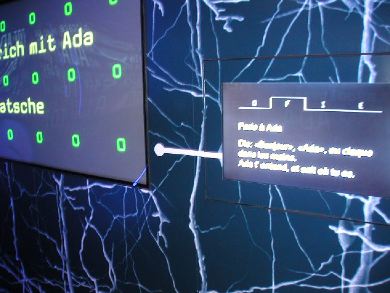 ..
..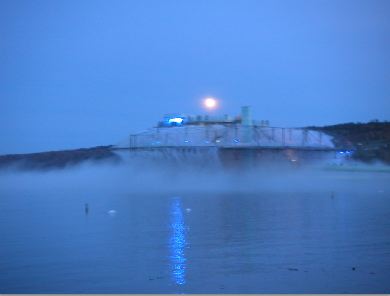
Neuron Group's Ada, Diller&Scofidio Blur
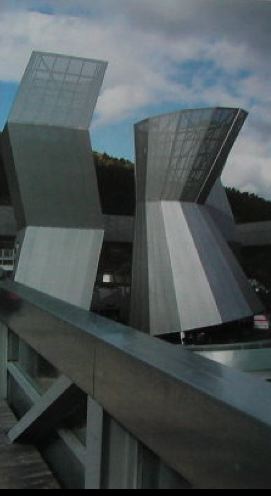
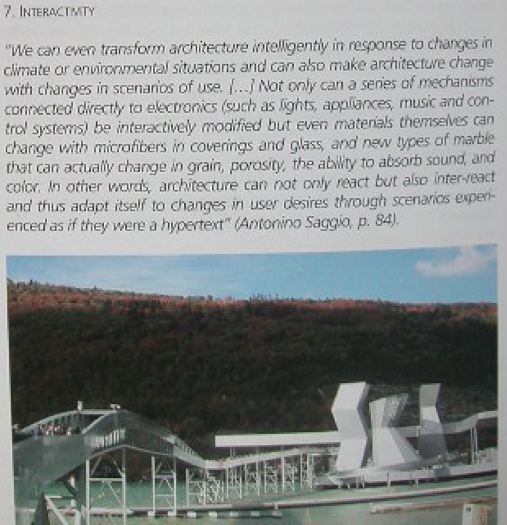
Coop Himmen(b)lau Klungsturm
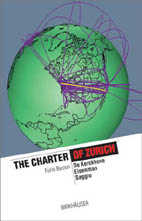 ..
..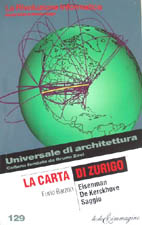
Noow that we have The
Chrtres of ZURICH
WEe have also to face new research, and to face newchallenges.
How this idea of a new interactive direction of
architecture will become a real intensifier? An Intensifier
of the
crucial positive constructive needs of humanity and not
merely anew fascinating experimental toy? How can we work towards to
an idea of interactivity that enlarges the sense of being?
Some of us will have also to pose these questions while
others have to push the scientific and aestethic challenge of this fascinating
field. Because the great joy is the team work.
END
ICA, The Mall, London SW1Y 5AH, UK
Mon 19 May, 9.30am-4.30pm, 7-8.30pm, Tues 20 May, 9.00am-12.30pm
A one and a half day international conference with keynote speakers
focusing on emerging identity of interactive architecture and its influence
on
the contemporary cultural environment.
An experiential architecture is evolving from a cross-disciplinary use of digital media that explores the way people relate to one another and their environments. How are interactive concepts and skills being creatively exploited at a time when the boundaries between public and private space are blurred and computing has become social infrastructure? In the overlap of building and programme comes unprecedented scope to modify individuals’ spatial experiences, but according to what and whose agenda? How do the issues provoked by the growth of pliable and responsive digital public environments warrant new definitions of creative roles?
Speakers include architects Ron Arad, Professor of Design at the Royal College of Art, Christian Möller, Professor of Design/Media Arts at UCLA, LarsSpuybroek (NOX, Rotterdam), Marcelyn Gow, Zurich (Servo, an international multidisciplinary practice based in NYC, LA, Zurich and Stockholm), Marc Neelen(Stealth network, Rotterdam/Belgrade), psychologist Dr Paul Verschure of ETH, Zurich, project leader of Ada: the intelligent room; Jim Read, associate consultant at Arup Communications; London-based architects Josephine Pletts and Usman Haque (Pletts Haque), architect Shona Kitchen of Kitchen Rogers and designer Ben Hooker, architects/filmmakers Tapio Snellmann and Christian Grou (neutral), filmmaker Chris Allen of a/v collective The Light Surgeons), Ole Bouman, editor-in-chief of Archis magazine, and Professor Antonino Saggio, Department of Architecture and Urban Planning, Rome University, 'La Sapienza’'.
Chairs: architect David Turnbull (atopia, London and New
York), Professor of Architecture, University of Bath, and
LucyBullivant, architectural critic and curator. Download
the entire program